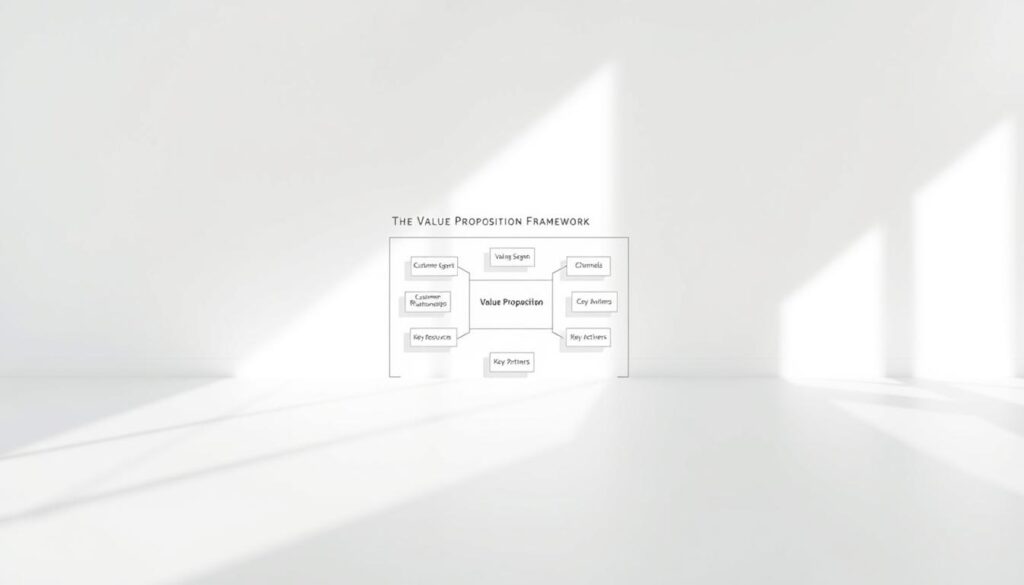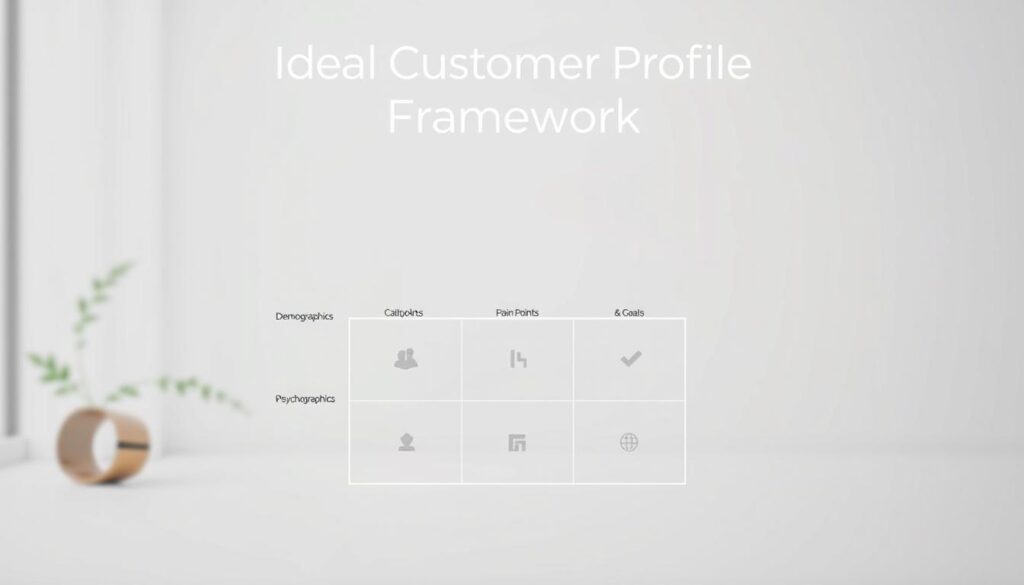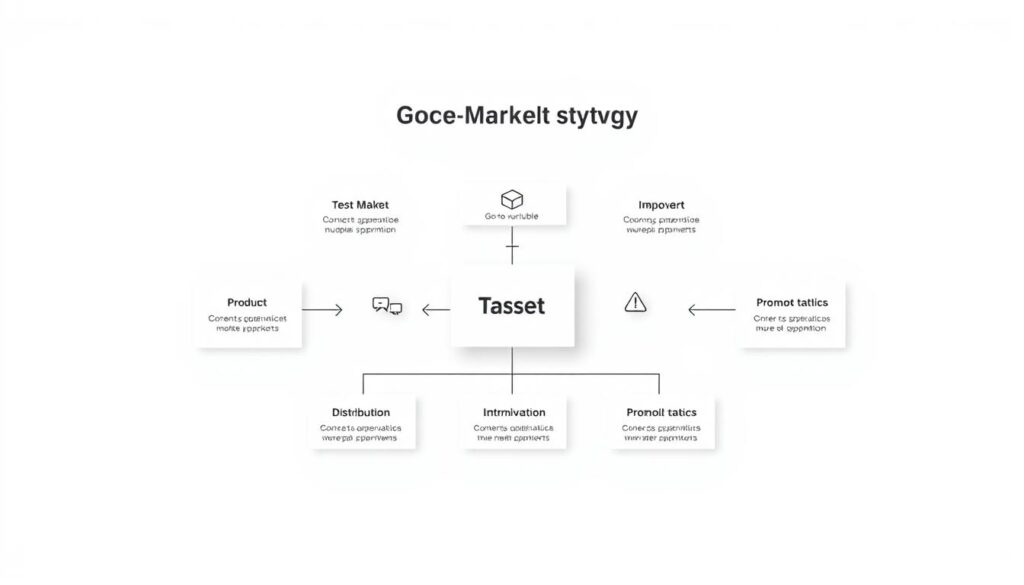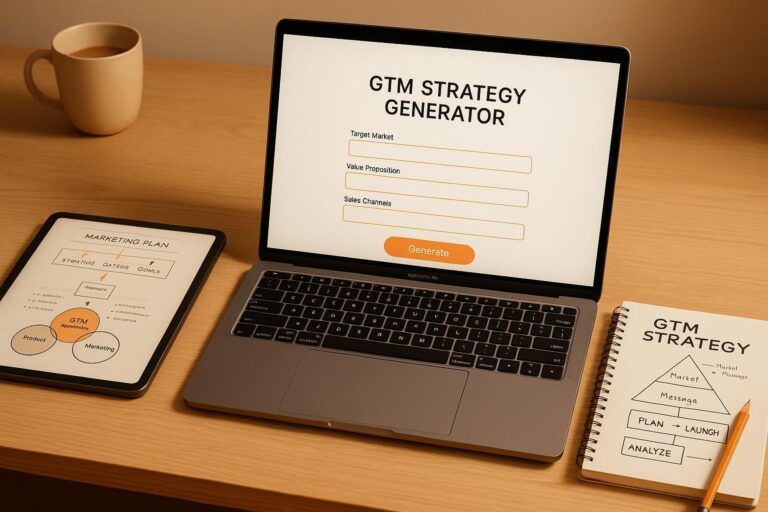Harvard Business School research reveals a harsh reality: over 30,000 new products launch yearly, but 95% fail. This staggering statistic underscores why a deliberate market strategy separates industry leaders from costly missteps. Effective execution requires more than innovative ideas—it demands precision in aligning messaging, timing, and audience needs.
Modern gtm strategy development bridges the gap between product creation and customer adoption. Organizations must weave product insights, competitive analysis, and behavioral data into cohesive narratives that resonate. When done right, this approach transforms generic campaigns into targeted value propositions that accelerate revenue growth.
The most successful teams treat content refinement as strategic infrastructure. They map messaging to specific buyer journeys while balancing creative experimentation with measurable outcomes. This dual focus helps businesses avoid wasted resources and capitalize on emerging opportunities in crowded markets.
Key Takeaways
- 95% of product launches fail without strategic alignment between development and distribution
- Data-driven messaging outperforms generic campaigns by 3:1 in conversion rates
- Cross-functional collaboration reduces time-to-market by 40% on average
- Personalized content drives 6x higher engagement in early adoption phases
- Continuous optimization cycles improve campaign ROI by 22% quarterly
Understanding the Go-To-Market Landscape
Global enterprises face a critical challenge: 83% of product launches miss revenue targets due to poor strategic alignment. This reality makes mastering the market strategy landscape essential for survival in competitive industries.
What Is a GTM Strategy?
A gtm strategy acts as a launchpad for new offerings. It answers four critical questions:
- Which specific problems does your solution uniquely address?
- Who experiences these pain points most acutely?
- Where will buyers encounter your product?
- How will you demonstrate superior value quickly?
Unlike general market strategy approaches, this plan coordinates pricing, distribution, and messaging into timed actions. It transforms theoretical plans into measurable outcomes.
The Importance of Product-Market Fit
Product-market fit determines whether solutions resonate deeply enough to drive adoption. Companies achieving this alignment see 2.3x faster revenue growth than competitors. Three indicators confirm strong fit:
- Customers describe your solution as “essential”
- Retention rates exceed industry benchmarks
- Organic referrals outpace paid acquisitions
The strategy vs. execution debate becomes irrelevant when teams validate fit early. Digital channels now provide real-time feedback loops, allowing rapid adjustments before full-scale launches.
Essential Components of a Winning Strategy
Leading companies achieve 53% higher market share by focusing on three non-negotiable elements: precision targeting, differentiated messaging, and adaptable execution. These components form the backbone of sustainable growth in saturated industries.

Competitive Positioning and Messaging
Market strategy success starts with razor-sharp differentiation. Teams must identify gaps competitors overlook, then craft value propositions that answer one critical question: “Why choose us when alternatives exist?”
Effective gtm strategy development combines three layers:
- Behavioral insights showing how customers actually use solutions
- Competitor weaknesses in service delivery or support
- Quantifiable outcomes your offering delivers faster
B2B enterprises often emphasize ROI timelines, while B2C brands highlight emotional benefits. A cybersecurity firm might position itself as “The only platform that reduces breach risk within 48 hours” rather than listing technical features.
Distribution models require equal strategic rigor. Companies selling complex SaaS solutions typically benefit from direct sales teams, while commodity products thrive through affiliate partnerships. The key lies in matching channel capabilities with buyer expectations at each journey stage.
“Positioning isn’t what you say about your product—it’s what your customers believe about it relative to alternatives.”
Pricing strategies complete the triad. Tiered models work best when addressing multiple buyer personas, while value-based pricing suits niche markets. Successful teams test multiple approaches through limited launches before scaling.
go to market content optimization
High-performing organizations allocate 40% of their launch budgets to strategic content development. This investment fuels every stage of buyer engagement, from initial curiosity to final purchase decisions. Marketing strategy alignment ensures materials address specific pain points while advancing broader business objectives.
Effective campaigns map assets to three critical phases: awareness-building articles, comparison guides for evaluators, and case studies that validate decisions. Teams using this approach see 68% faster pipeline progression than those relying on generic collateral. The key lies in tailoring depth and format to each audience segment’s preferences.
Data reveals which messages resonate with target customers. A/B testing headlines increases click-through rates by 34%, while video demos boost conversion rates by 29% for technical products. These insights enable continuous refinement of core value propositions without guesswork.
Distribution requires equal precision. A comprehensive go-to-market playbook integrates SEO principles with social algorithms to maximize reach. For example, LinkedIn carousels outperform blog posts for enterprise decision-makers, while TikTok tutorials dominate in consumer tech niches.
Successful teams treat content as living infrastructure. They establish feedback loops between sales conversations and marketing efforts, ensuring assets evolve with shifting buyer needs. This approach turns static documents into dynamic tools that accelerate revenue cycles.
Defining Your Ideal Customer Profile and Buyer Personas
Businesses that pinpoint their ideal customer profile achieve 47% higher conversion rates than those using broad targeting. This precision transforms generic outreach into laser-focused campaigns that resonate with high-value prospects.

ICP Breakdown and Demographics
Effective profiles blend quantitative data with behavioral insights. Key elements include:
- Industry verticals showing highest lifetime value
- Revenue thresholds indicating purchase capacity
- Technology stacks revealing compatibility needs
- Decision-making timelines affecting sales cycles
B2B teams must account for committee purchases – 6.8 stakeholders typically influence each deal. A manufacturing company’s target audience might include plant managers (users), CFOs (budget holders), and IT directors (integration specialists).
Identifying Buyer Pain Points
Deep discovery uncovers hidden challenges through:
- Win/loss interviews analyzing 90-day decision processes
- Usage data tracking feature adoption patterns
- Support ticket analysis revealing recurring issues
One SaaS company discovered clients struggled with data migration – a pain point never mentioned in sales conversations. Addressing this in their buyer personas increased trial conversions by 62%.
Crafting Your Unique Value Proposition and Messaging
Successful brands differentiate themselves through precise messaging that addresses core customer needs. A unique value proposition acts as your competitive fingerprint – it clearly states why buyers should choose your solution over alternatives. This requires deep alignment between what customers struggle with and how your offering delivers measurable relief.
From Features to Tangible Outcomes
Effective messaging starts with a value matrix that connects specific pain points to concrete benefits. For example:
- Healthcare IT buyers need compliance assurance → “Reduces audit preparation time by 65%”
- E-commerce managers fear cart abandonment → “Recovers 28% of lost sales automatically”
This approach eliminates vague claims like “improved efficiency.” Instead, it focuses on outcomes decision-makers can quantify. Teams using value matrices see 41% faster consensus-building among stakeholders.
“Your value proposition isn’t what you build – it’s what buyers believe they’ll gain.”
Language simplicity proves critical. Technical teams might appreciate granular details, but C-suite leaders need executive summaries showing bottom-line impact. Remove industry jargon to create messages that resonate across roles.
The final layer involves emotional triggers. While metrics build credibility, stories about reduced stress or career advancement drive action. Blend data with relatable narratives to address both logical and psychological needs.
Strategic Market and Competitive Analysis
Market leaders attribute 72% of successful launches to rigorous competitive intelligence. This process separates assumptions from actionable insights, guiding teams toward untapped opportunities.
SWOT and Competitor Research
Effective market strategy begins with mapping the battlefield. Teams must assess four critical dimensions:
- Customer spending patterns in target sectors
- Regulatory hurdles impacting product adoption
- Emerging technologies reshaping buyer expectations
- Economic trends influencing budget allocations
Tools like Similarweb reveal competitor traffic sources, while Semrush exposes keyword gaps. These platforms help identify under-served niches – crucial for new market entry strategies.
A robust gtm strategy examines both direct rivals and alternative solutions. For example, a meal kit company competes not just with other subscription services, but also grocery delivery apps and fast-casual restaurants.
“SWOT analysis becomes powerful when teams prioritize threats over strengths – survival depends on anticipating disruptions.”
Timing analysis often makes the difference between breakthrough and burnout. Teams using comprehensive analysis methods reduce launch risks by 38% through seasonal alignment and competitor activity tracking.
For new market entries, focus on three validation metrics:
- Minimum viable demand (6:1 ratio of buyers to capacity)
- Competitor reaction time (average 90-day response window)
- Customer switching costs (under 20% of annual contract value)
Developing a Robust Distribution and Sales Model
Choosing the right path to customers separates thriving businesses from those wasting resources. Effective models balance buyer preferences with operational realities – a challenge when 74% of decision-makers report inconsistent experiences across distribution channels. Alignment between product complexity and buyer expectations determines whether strategies scale or stall.
Sales Process and Channel Models
Four proven approaches dominate modern sales process design. Self-service platforms work best for straightforward purchases under $500, where clear guides replace human interaction. Inside sales teams shine when explaining technical differentiators – think CRM systems needing configuration support.
Field representatives justify their cost for six-figure contracts requiring executive buy-in. One medical device maker cut deal cycles by 33% using dedicated account managers. Channel partners offer rapid scaling but demand careful vetting – underperforming affiliates can damage brand reputation faster than they drive revenue.
“Your channel strategy should feel less like a spreadsheet and more like a tailored suit – cut precisely for your market’s contours.”
Successful teams map sales funnel stages to specific enablement tools. Early-stage prospects need comparison charts, while final decision-makers require ROI calculators. This tiered approach helped a SaaS company boost win rates by 41% in competitive bids.
Implementation requires cross-functional collaboration. Pricing experts ensure margins align with channel costs, while product marketers equip sales teams with battle-tested rebuttals. Regular pipeline reviews surface bottlenecks before they impact quarterly targets.
Optimizing Pricing Strategy for Market Success
Pricing determines whether innovations become profit engines or sunk costs. Research shows 60% of new product struggles trace back to misaligned pricing models. Effective market strategy requires balancing perceived value with operational realities – a tightrope walk where data replaces guesswork.
Cost Structures and Revenue Models
Value-based pricing outperforms cost-plus models by 34% in margin retention for differentiated offerings. Teams must analyze three core elements:
- Production expenses versus competitor benchmarks
- Buyer willingness-to-pay across segments
- Lifetime value projections for target customers
A SaaS company increased customer acquisition by 27% using dynamic pricing that adjusted for company size. Their model offered startup discounts while maintaining premium tiers for enterprises. This approach funded R&D through high-margin accounts without alienating smaller buyers.
Continuous price testing proves critical. One retailer boosted conversions 19% by changing “$499” to “Under $500” in campaigns. Such tweaks require real-time feedback loops between sales teams and pricing analysts.
Successful market strategy evolves with economic shifts. Teams monitoring inflation rates and disposable income trends adjust models quarterly. This agility turns pricing from a static figure into a strategic lever for sustainable growth.
FAQ
How does product-market fit influence go-to-market success?
Product-market fit acts as the foundation for effective GTM strategies by ensuring alignment between customer needs and product capabilities. Companies like Dropbox achieved this by iterating based on user feedback before scaling distribution channels, reducing customer acquisition costs through organic demand.
What elements make an ideal customer profile actionable?
Actionable ICPs combine firmographic data (industry, company size) with behavioral insights like budget cycles and decision-making processes. HubSpot’s ICP framework demonstrates this by targeting marketing managers at mid-sized tech firms with specific content addressing lead generation pain points.
Why should value propositions address buyer personas differently?
Different stakeholders prioritize distinct outcomes – CFOs care about ROI timelines while end-users value ease of adoption. Salesforce tailors messaging across LinkedIn ads and case studies to speak directly to each persona’s operational challenges and success metrics.
How do pricing models impact market entry strategies?
Freemium models (Slack) lower adoption barriers but require robust product-led growth systems, while value-based pricing (Consulting firms) demands clear ROI calculators. The chosen model directly affects sales funnel design and customer lifetime value calculations.
What competitive analysis tools reveal market opportunities?
SEMrush for digital share-of-voice analysis and G2 Crowd reviews help identify unmet needs. Canva used this approach to spot design accessibility gaps underserved by Adobe’s professional-focused tools, shaping their entire GTM content strategy.
When should companies prioritize inbound vs outbound sales channels?
Inbound dominates when educating buyers (HubSpot’s blog ecosystem), while outbound excels in saturated markets with clear decision-makers. Zoom combined both – using viral referral programs alongside targeted LinkedIn outreach to IT directors during their Series B expansion.



